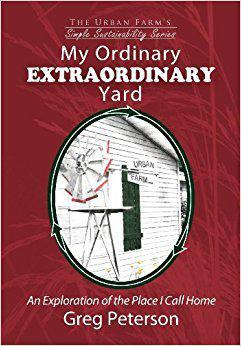Organic Vegetable Gardening for Amateurs
By James Smith
Organic vegetable gardening may seem difficult; however, let me assure you that it is actually not as difficult as it looks. For amateurs, the most important thing is to get the basics right. If you have the right foundations, you can get a high yield from the smallest of gardens.
Here are some tips you can use to start growing your own organic vegetables.
Start Right
For healthy plants that produce healthy fruits and vegetables, you have to make sure that you have the right growing conditions. For a large majority of vegetables, you will need at least six hours of direct sunlight every day. If your garden has poor soil, you will need to improve it with lots of natural matter like compost.
To avoid problems such as diseases, insect attacks, and pests, go for plants that are not very susceptible to diseases naturally. To further reduce problems, get disease resistant varieties.

Feed Your Plants Organic Matter
If your soil is fertile, you may not need to be fertilizing it. If you still do so, it will help your crops, to a certain extent, to grow faster and give you a higher yield. If you choose to fertilize your soil, make sure you use only natural matter. For example, rotted manure from plant-eating animals such as horses, chickens, sheep and rabbits. If you are looking for ready-made compost, go for only organic matter.
However, experts recommend not fertilizing the soil if it is already fertile enough. Fertilizing it further could make the soil soft and lush, leaving it vulnerable to pests. Plants that grow slowly are often better at resisting diseases and insects.
Rotate Your Crops
Planting the same crop in the same spot year after year can make it vulnerable to diseases. The element of surprise is vital in protecting your crops from diseases. Plant your crops in different parts of the garden every year.
Closely related plants are more likely to be affected by the same diseases, hence, avoid planting crops where their relatives were the previous growing season. An example of the closest related families is the squash and the tomato family; the latter includes peppers, eggplant, potatoes and tomatoes, while the former includes cucumber, squash, watermelon and pumpkin.
Mulch Well
When creating a barrier that prevents fungal diseases from splashing on the crops, a layer of mulch on the soil also helps reduce weeds. A 1- to 2-inch thick layer is considered most effective.
For the best results, use mulch made of organic matter which is all the better as it adds nutrients to the soil as it decomposes over time.
Equipment
For amateurs, this is one of the more important things to keep in mind. Make sure you have the right gardening equipment before you start planting your crops. At the time of harvest, you will need different harvest equipment. The right equipment will not only save you a lot of time, it will also make sure you get a high yield as you will be able to care for your crops better.
Editor’s note: To dig deeper into starting your own urban farm, check out our upcoming course Growing Food the Basics.
About the author: James Smith is a survivalist and a homesteader, who loves to share his knowledge and experience. Currently he is working for Teotwawki Supplies, a store offering survival food kits and other emergency survival supplies. Follow @JamesSmith1609 for more updates.







